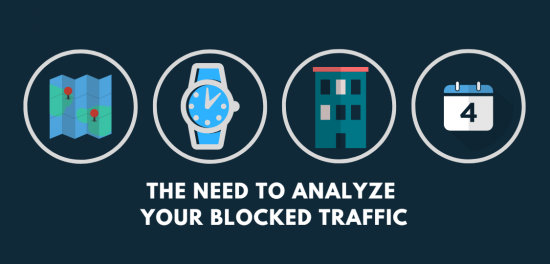We’ve all heard the statistics of the growing numbers of web threats and hacking attempts on the web. Whether it’s from the recent onslaught of ransomware attacks, or the growing Dark Web, there’s no day that passes by that we don’t hear about the dangers that the cyber realm faces. However, it’s a great day and age where more and more services are becoming available to customers all the way from individuals and startups to enterprises alike. Many services (like Cloudbric) take little to no management, and we can all rest a little bit easier at night knowing that our sites and other web applications are secure.
However, there is a further step you can take after your traffic is set with a WAF or website security serviceーand that’s an analysis of the blocked traffic. Now, you might wonder why analyzing blocked traffic is necessary, especially when the deed is done and over with. However, analyzing the type of traffic that may be attempting to infiltrate your application can give you great insight on how to up your security game.
This past week, our parent company Penta Security Systems released their annual Web Application Threat Trend (WATT) report, and the findings showed that depending on different segments, like industry type, continent, and even time of day, the attack types that target your site can vary greatly. For example, Penta found that Cross-Site Scripting (or XSS) showed the biggest presence in social and community-related industries since the administration of these types of sites tends to be relatively lax. This means that individual PCs and terminals that access these sites are especially vulnerable to attacks. However, on the flip side, File Upload attacks make up a significant portion of attacks in the education industry because attackers usually attempt to gain some sort of server system privilege or distribute malicious files to user PCs and terminals via the website.
Hackers are also beginning to change up their strategies depending on your particular region. For example, Penta found that users located in Asia faced more XSS attacks than in North America which saw more Directory Traversal attacks. Analysts reported that this might be because users in this region are much more likely to utilize sites that have unsanitized input fields for scripts, and hackers may target that vulnerability in particular.
Understanding your industry’s specific threat environment and how it is targeted by certain attacks can be vital to fixing up your site because as we all know, security isn’t a one-stop shop. Trends and patterns for hackers are never going to stay consistent, and while our logic-based detection engine takes into account the variations in attacks, staying ahead of the game and keeping a close eye on the trends can bring you that much closer to developing a holistic infosecurity strategy.
To download the report, head to Penta Security’s site here. For more information regarding the report, feel free to email us at global@cloudbric.com






